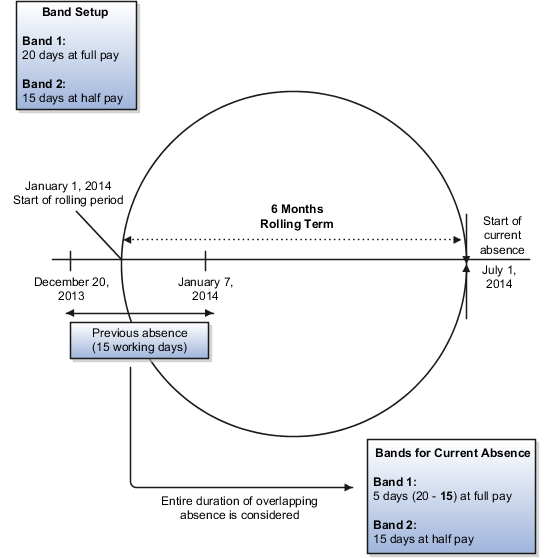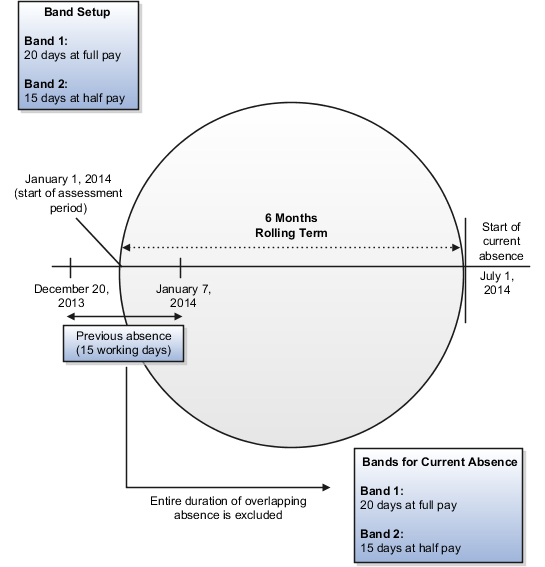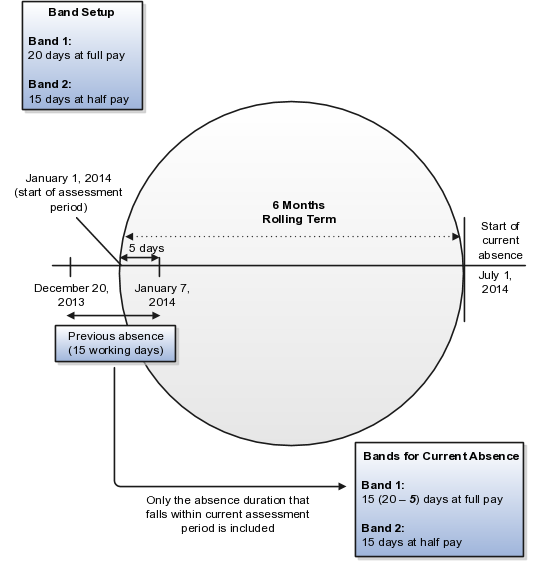Options to Define Overlap Rules for Qualification Plans
When you define a rolling backward plan term for an absence qualification plan, you must select an overlap rule that determines how to deal with absences where only a partial period overlaps the current term.
The examples in this topic will help you understand how you can use the following:
-
Include rule to assess absences that overlap current and previous terms
-
Exclude rule to ignore the entire absence that overlaps the current and previous terms
-
Split rule to assess absences falling within the current term only
The Include Rule
If an absence overlaps the beginning of the rolling period, you consider the entire absence in the current assessment period.
Scenario: You defined a six-month rolling-backward term in your qualification plan and set up bands that entitle workers to 20 days absence at full pay and a further 15 days at half pay.
-
The assessment period for a worker began on January 1, 2014.
-
The worker starts sick leave on July 1, 2014.
Previously, the worker received payment under the same sick leave entitlement plan for 15 working days from December 20, 2013 to January 7, 2014.
Because you configured the plan term to use the Include rule, the previous absence that overlaps the current assessment period is considered. So for the absence beginning on July 1, 2014, the worker receives full pay for the first 5 (20 - 15) days of the absence and half-pay for the next 15 days.
The following figure shows the usage of the Include rule in this scenario.

The Exclude Rule
If a worker is absent at the beginning of an assessment period, this rule ignores the entire absence that overlaps the period. In the example used in the previous scenario, for a rolling backward term that uses the Exclude rule, the worker receives:
-
Full pay for the first 20 days of the absence
-
Half pay for the next 15 days
Even though the previous absence overlaps the current assessment period, the worker receives the entitlement band benefits for the current absence without any deductions.
The following figure shows the usage of the Exclude rule in this scenario.

The Split Rule
This rule assesses overlapping absences that fall within the current plan term only. In the example used in the previous scenario, for a qualification plan that uses the Split rule, the worker receives full pay for the first 15 (20 - 5) days of the absence and half pay for the next 15 days.
The following figure shows the usage of the Split rule in this scenario.
